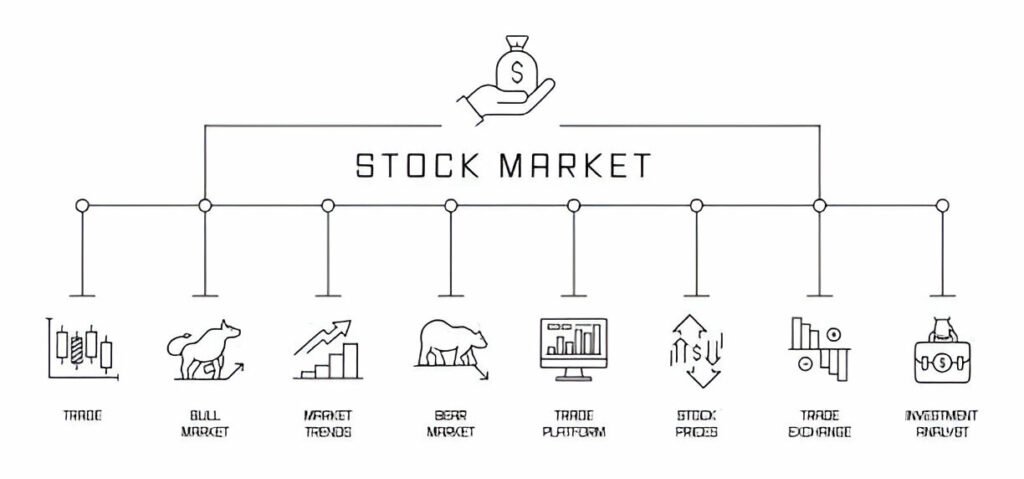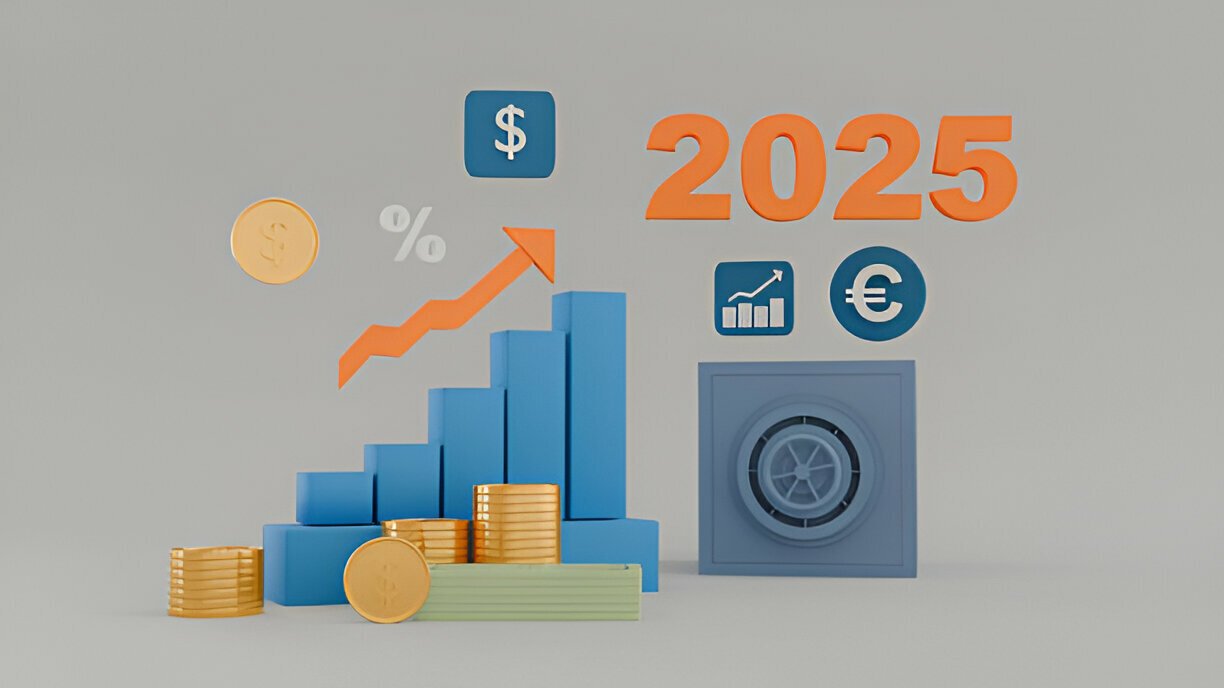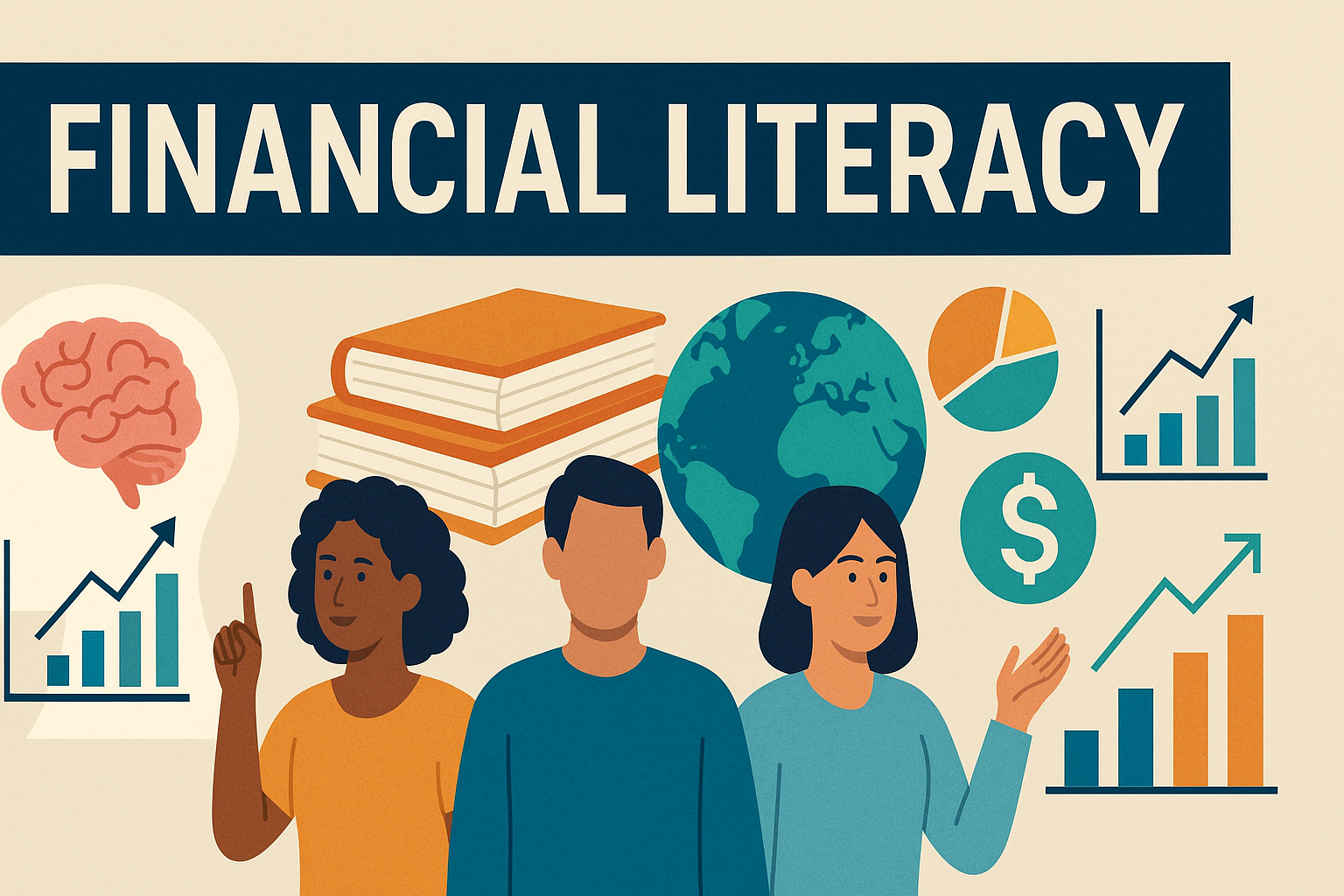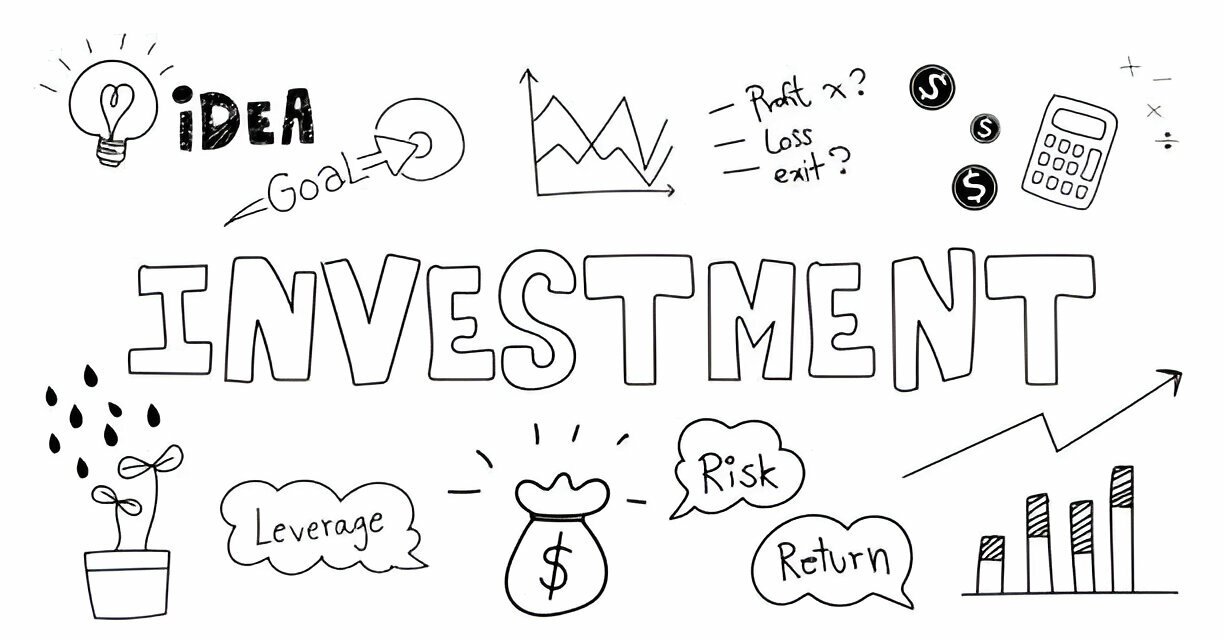Introduction: Why Your Investment Portfolio Matters More Than Ever
The investment landscape in 2025 presents unique opportunities and challenges that didn’t exist even five years ago. With inflation rates having peaked at 9.1% in June 2022 and currently stabilizing around 3.2%, building a diversified investment portfolio has become essential for preserving and growing wealth. According to recent Federal Reserve data, Americans who started investing in their 20s accumulate an average of $1.4 million more in retirement savings compared to those who begin in their 30s. More From Mobelweath: How to Start Investing for Beginners: Complete Portfolio
The key insight here is timing combined with strategy. While market volatility has increased by 23% since 2020, diversified portfolios have still outperformed traditional savings accounts by an average of 8.7% annually. This guide will walk you through creating a robust investment portfolio that can weather economic uncertainty while building long-term wealth. More From Mobelwealth: Best Investment Analyzer Tool: Maximize Your Returns Like a Pro
Understanding Your Financial Foundation
Assessing Your Current Financial Situation

Before investing a single dollar, you need a clear picture of your financial health. Start by calculating your net worth using this simple formula: Assets minus Liabilities equals Net Worth. The median net worth for Americans under 35 is approximately $13,900, which means many first-time investors are starting from a modest base.
Your debt-to-income ratio should ideally be below 36% before you begin serious investing. If you’re carrying high-interest debt (credit cards averaging 24.61% APR in 2025), prioritize paying this off first. The mathematical reality is stark: even the best-performing stock market years rarely exceed 25% returns, making it nearly impossible to out-invest high-interest debt. More From Mobelwealth: 10 Proven Investment Strategies to Maximize Your Wealth i…
Emergency Fund: Your Investment Safety Net
Financial experts consistently recommend maintaining three to six months of expenses in an emergency fund. However, my analysis suggests a more nuanced approach for 2025. Given the current economic uncertainty, aim for four to eight months of expenses, with the higher end for those in volatile industries like technology or hospitality.
High-yield savings accounts now offer rates between 4.5% and 5.2%, making them attractive for emergency funds. This represents a significant improvement from the 0.1% rates common in 2020-2021, providing better inflation protection for your safety net.
Investment Goals and Risk Tolerance
Defining Your Investment Objectives

Your investment goals should follow the SMART framework: Specific, Measurable, Achievable, Relevant, and Time-bound. Research from Vanguard shows that investors with clearly defined goals are 42% more likely to achieve their financial objectives compared to those without specific targets.
Consider these common investment goals and their typical time horizons:
- Retirement (20-40 years): Focus on growth-oriented investments
- Home down payment (3-7 years): Balance growth with stability
- Children’s education (10-18 years): Moderate growth with increasing conservatism
- Wealth building (10+ years): Aggressive growth strategies
Understanding Risk Tolerance
Risk tolerance isn’t just about how much volatility you can stomach emotionally; it’s about aligning your capacity for risk with your financial situation. A 25-year-old with stable income and no dependents can typically handle more risk than a 45-year-old supporting a family with a mortgage.
The standard deviation of the S&P 500 over the past 20 years is approximately 16%, meaning in any given year, returns could reasonably range from -16% to +32% around the average return. Understanding this helps set realistic expectations and prevents emotional investing decisions.
Core Investment Vehicles for Beginners
Stock Market Fundamentals

Individual stocks represent ownership in companies, and their performance directly correlates with business success. The S&P 500 has delivered an average annual return of 10.26% since 1957, though this includes significant volatility periods. For beginners, I recommend starting with broad market exposure rather than picking individual stocks.
The key insight is that stock picking requires substantial research and time. Studies show that 89% of actively managed funds underperform the market over 15-year periods, suggesting that broad market exposure through index funds often provides superior results with less effort.
Bond Market Basics
Bonds provide portfolio stability and income generation. With the Federal Reserve maintaining interest rates between 5.25% and 5.50% in 2025, bond yields have become more attractive than they were during the low-rate environment of 2020-2021. Treasury bonds currently offer yields between 4.2% and 4.8% depending on maturity.
The bond market’s inverse relationship with interest rates means that as rates rise, existing bond values fall. This creates both opportunities and risks for new investors. Short-term bonds (1-3 years) offer less interest rate risk but lower yields, while long-term bonds (10+ years) provide higher yields but greater volatility.
Exchange-Traded Funds (ETFs)
ETFs have revolutionized investing for beginners by providing instant diversification at low costs. The average expense ratio for broad market ETFs is now just 0.04%, compared to 0.74% for actively managed mutual funds. This difference compounds significantly over time.
Popular beginner-friendly ETFs include:
- Total Stock Market ETFs (VTI, ITOT): Provide exposure to entire U.S. stock market
- S&P 500 ETFs (SPY, VOO): Focus on large-cap American companies
- International ETFs (VTIAX, FTIHX): Add global diversification
- Bond ETFs (BND, AGG): Provide fixed-income exposure
Building Your Portfolio Strategy
Asset Allocation Principles
Asset allocation is the single most important factor in portfolio performance, typically accounting for 90% of return variation. The traditional rule of thumb suggests holding your age in bonds (a 30-year-old holds 30% bonds, 70% stocks), but this may be too conservative in today’s environment.
Modern portfolio theory suggests optimal allocation depends on your risk tolerance, time horizon, and return objectives. For most beginners under 40, an allocation of 80-90% stocks and 10-20% bonds provides good growth potential while maintaining some stability.
Diversification Strategies
Diversification extends beyond just mixing stocks and bonds. True diversification includes:
- Geographic diversification (domestic vs. international)
- Sector diversification (technology, healthcare, finance, etc.)
- Market cap diversification (large, mid, small-cap stocks)
- Style diversification (growth vs. value investing)
Research indicates that holding 20-30 individual stocks can achieve about 90% of the diversification benefits possible. However, broad market ETFs provide this diversification instantly with just one purchase.
Dollar-Cost Averaging
Dollar-cost averaging involves investing a fixed amount regularly regardless of market conditions. This strategy reduces the impact of market volatility and eliminates the need to time the market. Studies show that investors who use dollar-cost averaging earn approximately 1.5% more annually than those who try to time their investments.
The psychological benefit is equally important. Regular investing creates a habit and removes emotional decision-making from the investment process. Even during market downturns, you continue building your position at lower prices.
Practical Implementation Steps
Opening Investment Accounts
Choose between taxable brokerage accounts and tax-advantaged accounts based on your goals. For retirement investing, 401(k) plans offer immediate tax benefits and potential employer matching. The average employer match is 4.7% of salary, representing free money you shouldn’t ignore.
Roth IRAs provide tax-free growth and withdrawals in retirement, making them ideal for younger investors in lower tax brackets. The 2025 contribution limit is $7,000 for those under 50, or $8,000 for those 50 and older.
Selecting Your First Investments
Start simple with three to four broad market ETFs:
- U.S. Total Market ETF (60-70% of portfolio)
- International Developed Markets ETF (20-25% of portfolio)
- Emerging Markets ETF (5-10% of portfolio)
- Bond ETF (10-20% of portfolio)
This allocation provides global diversification while keeping costs low and management simple. As you gain experience and knowledge, you can add sector-specific ETFs or individual stocks.
Rebalancing Your Portfolio
Rebalancing involves returning your portfolio to its target allocation by selling overperforming assets and buying underperforming ones. This forces you to “sell high and buy low” systematically. Research suggests quarterly or semi-annual rebalancing provides optimal results without excessive transaction costs.
Common Mistakes to Avoid
Emotional Investing
Market volatility triggers strong emotional responses that often lead to poor investment decisions. The average investor earns 3.2% less annually than market returns due to emotional buying and selling. Fear and greed are portfolio killers.
During the 2020 market crash, investors who sold in March missed the subsequent recovery that began in April. Those who stayed invested or continued buying recovered their losses and achieved strong gains through 2021.
Trying to Time the Market
Market timing requires correctly predicting both when to sell and when to buy back in. Academic research consistently shows that missing just the 10 best days in the market over 20 years reduces returns by approximately 50%. Time in the market beats timing the market.
Neglecting Fees and Expenses
Investment fees compound over time and can significantly impact long-term wealth accumulation. A 1% annual fee on a $10,000 investment costs $2,600 over 20 years, assuming 7% annual returns. Always compare expense ratios when selecting funds.
Advanced Considerations
Tax-Efficient Investing
Understanding tax implications can significantly boost your after-tax returns. Hold tax-efficient investments like index funds in taxable accounts, while placing tax-inefficient investments like REITs in tax-advantaged accounts.
Tax-loss harvesting involves selling losing investments to offset gains from winning investments. This strategy can save hundreds or thousands of dollars annually in taxes for investors in higher tax brackets.
Regular Portfolio Review
Schedule quarterly portfolio reviews to assess performance, rebalance if necessary, and adjust your strategy based on life changes. Your investment strategy should evolve as your income, family situation, and proximity to financial goals change.
Conclusion: Your Investment Journey Begins Now
according to data from Federal Reserve Economic Data (FRED), Bureau of Labor Statistics, and Morningstar Direct for fund performance data, Building your first investment portfolio in 2025 requires balancing growth potential with risk management while maintaining a long-term perspective. The key principles remain constant: start early, diversify broadly, keep costs low, and stay disciplined through market volatility.
Remember that investing is a marathon, not a sprint. The compound growth of consistent investing over decades creates substantial wealth. A $500 monthly investment earning 7% annually grows to over $1.3 million over 30 years, demonstrating the power of time and consistency.
Your financial future depends on the actions you take today. Start with small, consistent investments and gradually increase your contributions as your income grows. The perfect portfolio doesn’t exist, but a well-diversified, low-cost portfolio maintained over time will serve you well on your wealth-building journey.
The most important step is the first one. Open an investment account, make your first investment, and begin the process of building long-term wealth. Your future self will thank you for starting today rather than waiting for the “perfect” time to begin.













Loading comments...
Leave a Comment(Login required)